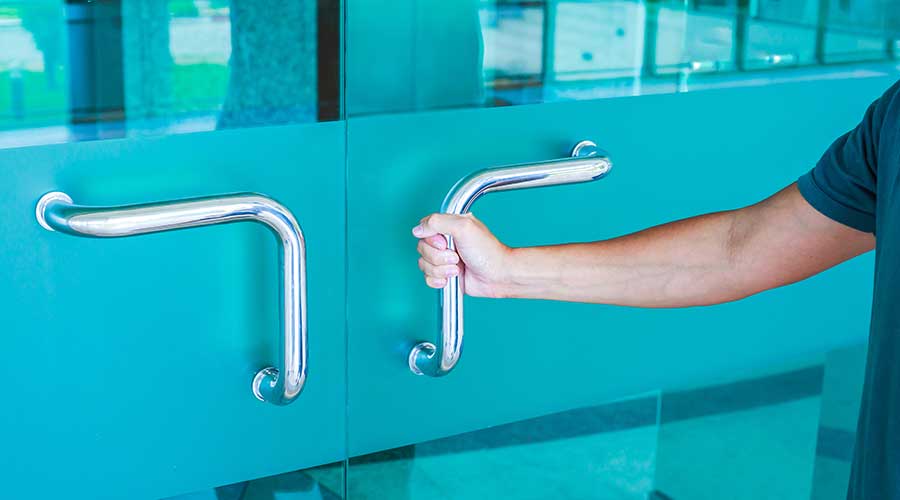Security breaches are always worrisome, but when they occur in hospitals and other healthcare facilities, they are nearly impossible to navigate. Talks of access control are becoming more common because of increased acts of violence in hospitals. As more facilities upgrade security systems to keep employees, patients and residents safe, they are often neglecting one of the biggest factors in these breaches: doors and hardware.
“Appropriately selected door products are critical to an access control system working properly,” says A. Cedric Calhoun, CEO of DHI & DSSF. “By influencing the architect’s specifications, facility managers can establish a facility standard to ensure safety is consistent throughout the facility.”
Managers must consider several factors when choosing a door for a facility. Not only does it have to comply with buildings codes, but managers must determine if it will be in a high-traffic area or if it leads to a patient’s room. Knowing where the door is located and its traffic patterns will also help managers plan for the maintenance that is needed to extend the product’s longevity. Something as small as maintaining door hardware can reduce a facility’s liability in a high-stakes environment.
“Regular maintenance on doors and hardware is critical to ensure proper function,” Calhoun says. “For instance, a door closer that isn’t adjusted properly may not fully close the door, which means the latch will not engage, resulting in an unsecured door, which in turn can lead to unauthorized access to the facility.”
Read Next: Doors and Hardware: Critical Safety Where You Last Think
Beyond the code requirements that go into designing a facility, managers must understand the way access points affect the way people, materials and information travel throughout the building. These factors make doors and hardware among the most critical components of their physical infrastructure.
“Facilities mangers, especially in healthcare, should choose products that have stood the test of time and are well supported by their manufacturer,” Calhoun says. “The facility mangers can influence the architect’s specifications by establishing a facility standard to follow, which will ensure the end user gets the function and quality that the facility requires.”
Designing a facility with safety and security in mind can only do so much to prevent violence. Many existing access control functions are susceptible to being compromised by intruders. It is essential for managers to ensure that exterior readers remain alarmed at all times and grant only certain people access to areas of the building.
Other ways managers can improve security with doors and hardware is by replacing exposed hinges, removing door handles that are easy to pick open and using video surveillance technology. Not only can these approaches limit security breaches, but they can also protect immunocompromised patients from unnecessarily exposure to new illnesses.
“As our facilities become more dependent on electrified hardware, access control, and video monitoring to ensure safety and security simultaneously, it is important that facility managers engage with DHI’s professional consultants to select appropriate products and establish maintenance procedures,” Calhoun says.
Mackenna Moralez is the associate editor of the facilities market.

 UF Health Hospitals Rely on Green Globes to Realize Their Full Potential
UF Health Hospitals Rely on Green Globes to Realize Their Full Potential How Healthcare Facilities Can Be Truly Disaster-Resilient
How Healthcare Facilities Can Be Truly Disaster-Resilient TriasMD Breaks Ground on DISC Surgery Center for San Fernando Valley
TriasMD Breaks Ground on DISC Surgery Center for San Fernando Valley Bigfork Valley Hospital Falls Victim to Data Breach
Bigfork Valley Hospital Falls Victim to Data Breach AI-Driven Facilities: Strategic Planning and Cost Management
AI-Driven Facilities: Strategic Planning and Cost Management